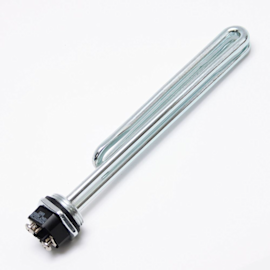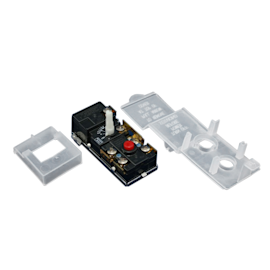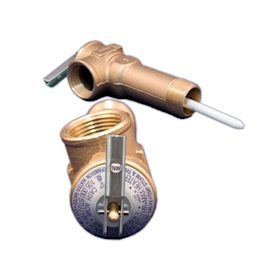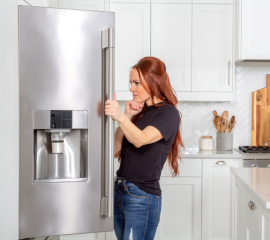Water too hot: electric water heater troubleshooting video


A water heater that overheats water can be a dangerous problem. Aside from possible burning, overheated water could be a sign of a short-circuited heating element or a malfunctioning thermostat. This video shows you how safely check continuity on the various parts and wires inside your water heater so that you can find the correct part to get your system up and running correctly.
For more water heater repair troubleshooting tips and repair guides, check our water heater repair page. Get replacement water heater parts at Sears PartsDirect.
Tools and parts needed
Multimeter
Hand tools
Work gloves
Thermostat
Causes of overheating
Hi, this is Wayne with Sears PartsDirect. Today we're going to talk about an electric water heater that's overheating.
Nobody expects their tap water to be scalding hot. For safety’s sake, your tap water should never be hotter than 120 degrees F. But that's what can happen if your water heater has a shorted heating element or a broken thermostat.
A thermostat that's stuck in the "on" position will cause the heating element to stay on constantly, overheating the water in the tank. Or, if the element breaks, it can make contact with metal inside the water heater, creating a short circuit. Electric current flows through the element to the metal, causing the element to heat constantly.
How to check for a short circuit
We’ll want to check for a short circuit first because it creates a dangerous electrical shock hazard.
If you suspect that you have a shorted heating element, do not touch the cabinet until you have turned off the circuit breakers. Do not turn the circuit breakers back on until after you have repaired the heating element or the wiring.
We’ll use a multimeter to check the elements for a short to the metal cabinet.
With the house circuit breakers shut off, remove the cover on the lower heating element. Pull the insulation and plastic cover up to access the heating element leads. Set your multimeter to measure resistance.
Touch a meter probe to one of the leads on the element and put the other meter probe on the bare metal frame next to the element. You should see a 1 the far left corner of the meter display indicating no continuity.
No continuity means that there is no current flowing to the metal cabinet. If you measure any resistance between the element lead and the metal cabinet, then the element is shorted and needs to be replaced.
Be sure to check both sides of the heating element.
If you don't measure continuity from the element to the cabinet, check the resistance through the element to see if it's okay. Touch one meter probe to each of the element leads. A good heating element will measure about 13 ohms of resistance.
If you do measure 13 ohms of resistance through the element and no continuity to the metal cabinet, then you know that the heating element is okay.
If you measure no continuity through the element, drain the tank and replace the element. This video will walk you through that process.
Check the upper heating element for a short to the metal cabinet in the same manner. Replace the upper heating element if it's broken and/or shorting to the metal cabinet.
How to replace the thermostat
If you don’t find a problem with the heating elements, then you know a broken thermostat is what’s causing the water to overheat.
So which one do you replace? Unfortunately, there is no way to test the thermostats to see if they're turning off the elements when they’re supposed to.
You can try replacing the lower thermostat and see if that resolves your overheating problem. If not, you’ll need to replace the upper thermostat as well. This video will walk you through replacing a thermostat.
Well, I hope this video helped you out today. Check out our other videos on the YouTube channel and if you like them, subscribe.
Symptoms for electric water heaters
Main causes: excessive tank sediment, high voltage supply…
Main causes: thermostats need adjustment, bad heating elements, faulty thermostats, tank sediment build-up, broken dip t…
Repair guides for electric water heaters

How to replace a water heater element
If your water heater runs out of hot water quickly and one of the two heating elements has failed, replace the element f…

How to replace an electric water heater thermostat
If the water temperature fluctuates or you don't get enough hot water, follow these instructions to replace your water h…

How to replace a water heater temperature and pressure (T&P) relief valve
Replace a broken temperature/pressure (T&P) relief valve on an electric water heater using these instructions.…
Articles and videos for electric water heaters

Get advice on simple DIY fixes for appliances that you can safely do on your own.…

Get answers to frequently asked questions about Sears and Sears PartsDirect.…

Learn how to troubleshoot issues when your electric water heater is not heating your water.…